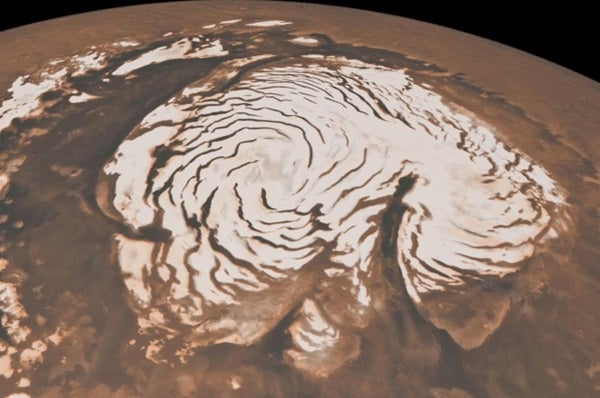With scientists trying hard to get new a mission on Mars, this recent study might give us information that could impact future travel to the Red Planet.
A study published August 21 in Nature Geoscience found new information about heavy snowstorms on the Red Planet. While researchers knew snow existed there, given the ice caps at its poles and the data from NASA’s Phoenix Lander back in 2008, no one predicted how severe Mars’ snowstorms are.
Instead of the regular weather predicting method using one type of software at a time, the research team ran three popular computer models at once to simulate the climate, calculate the air turbulence, and predict Mars’ weather.
Scientists knew Mars has clouds, but they hadn’t considered how important those clouds could be to its larger-scale weather. Using those three models at once showed how clouds absorbing sunlight stay warm during the day and keep the atmosphere stable. But temperatures inside the clouds drop 7.2 degrees Fahrenheit (4 degrees Celsius) per hour after the Sun sets.
Hot air then rises from the surface of the planet and combines with the cool air dropping from the clouds, causing wind that hits about 22 miles per hour (10 meters per second) and snow-like ice particles. The simulations also showed water vapor rising inside polar clouds, but they don’t know if it stays in the clouds or rises so high it gets lost to space. Researchers say this evaporation process could explain how Mars lost its water in the first place.
Knowing what the weather on Mars is like and being able to predict it will be helpful in any potential future missions.










